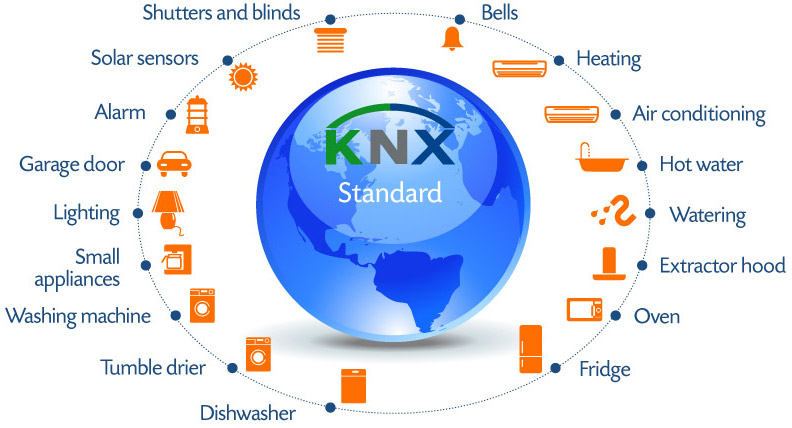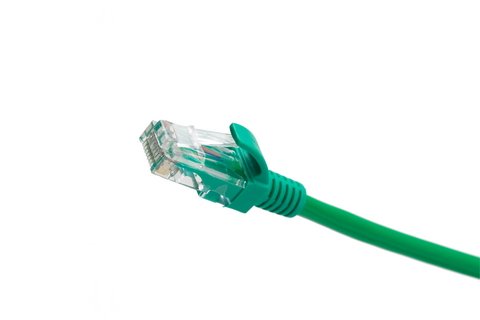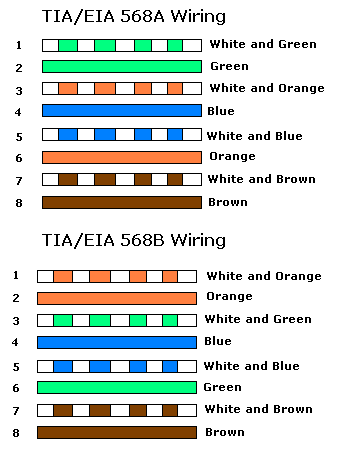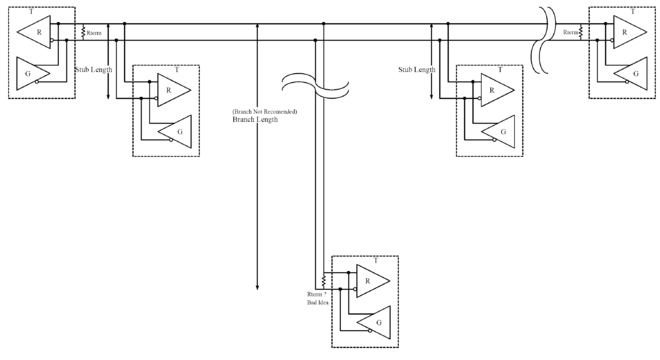THREE MODE CONNECTION
AEG SUPPORT THREE CONNECTION FOR ALL ENVIRONMENT
HOME-INDUSTRIAL-AIRPORT-HOSPITAL-HOTEL
A. KNX PROTOCOL
B. LAN PROTOCOL
C. RS458 PROTOCOL
KNX .

KNX is a standardized (EN 50090, ISO/IEC 14543), OSI-based network
Communications protocol for intelligent buildings. KNX is the successor to,
and convergence of, three previous standards: the European Home Systems
Protocol (EHS), BATIBUS, and the European Installation Bus (EIB or
INSTABUS ). The KNX standard is administered by the KNX Association.
KNX protocol
The standard is based on the communication stack of EIB but enlarged with the physical layers, configuration modes
and application experience of BATIBUS and EHS.
KNX defines several physical communication medias:
Twisted pair wiring (inherited from the BATIBUS and EIB INSTABUS standards)
Power line networking (inherited from EIB and EHS - similar to that used by X10)
Radio (KNX-RF)
Infrared
Ethernet (also known as EIBNET/IP or KNXNET/IP)
KNX is designed to be independent of any particular hardware platform. A KNX Device Network can be controlled
by anything from an 8-bit microcontroller to a PC, according to the needs of a particular implementation. The most
common form of installation is over twisted pair medium.
KNX is approved as an open standard to:
International standard (ISO/IEC 14543-3)
Canadian standard (CSA-ISO/IEC 14543-3)
European Standard (CENELEC EN 50090 and CEN EN 13321-1)
Wire transmission
Twisted pair using differential signaling with a signaling speed of 9600 bit/s. Ideal wave resistance at 100 kHz is 120 Ω.
Line resistance at 20 Ω/km, max 75 Ω/km. Maximum capacitance bus-to-bus line max 800 pF/m at 800 Hz. Higher
capacitance requires proportionally shorter cable length. Bus power with 30 V DC and 25 mA [4] Polarization
critical.[5] Devices within same physical segment are addressed with 8-bits[6] Maximum 57600 network nodes.[5]
Media access control is controlled with the CSMA/CA method[7] Maximum segment length is 1000 m.[7] 4 segments
may be connected with line repeaters to establish a network length of 4000 m.[7] Loops are not allowed.[7]
# Field D7 D6 D5 D4 D3 D2 D1 D0
0
Control[5]
R-repeated packet
Px-priority
1 0 R 1 P1 P0 0 0
1 Source address #0 [5]
2 Source address #1 [5]
3 Destination address #0 [5]
4 Destination address #1 [5]
5
Destination type[5]
Routing info
Length
DT R2 R1 R0 L3 L2 L1 L0
6 User data 1-16 bytes [5]
Checksum (S) [5]


 LAN.
LAN.
A local area network (LAN) is a computer network that interconnects computers within a limited area such as
a home, school, computer laboratory, or office building, using network media.[1] The defining characteristics of
LANs, in contrast to wide area networks (WANs), include their smaller geographic area, and non-inclusion of
leased telecommunication lines.
ARCNET, Token Ring and other technology standards have been used in the past, but Ethernet over twisted
pair cabling, and Wi-Fi are the two most common technologies currently used to build LANs.
Standards evolution
The development and proliferation of personal computers using the CP/M operating system in the late 1970s,
and later DOS-based systems starting in 1981, meant that many sites grew to dozens or even hundreds of
computers. The initial driving force for networking was generally to share storage and printers, which were both
expensive at the time. There was much enthusiasm for the concept and for several years, from about 1983
onward, computer industry pundits would regularly declare the coming year to be “the year of the
LAN”.[9][10][11]
In practice, the concept was marred by proliferation of incompatible physical layer and network protocol
implementations, and a plethora of methods of sharing resources. Typically, each vendor would have its own
type of network card, cabling, protocol, and network operating system. A solution appeared with the advent of
Novell NetWare which provided even-handed support for dozens of competing card/cable types, and a much
more sophisticated operating system than most of its competitors. Netware dominated[12] the personal
computer LAN business from early after its introduction in 1983 until the mid-1990s when Microsoft introduced
Windows NT Advanced Server and Windows for Workgroups.
Of the competitors to NetWare, only Banyan Vines had comparable technical strengths, but Banyan never
gained a secure base. Microsoft and 3Com worked together to create a simple network operating system which
formed the base of 3Com's 3+Share, Microsoft's LAN Manager and IBM's LAN Server - but none of these
was particularly successful.
During the same period, Unix computer workstations from vendors such as Sun Microsystems, Hewlett-
Packard, Silicon Graphics, Intergraph, NeXT and Apollo were using TCP/IP based networking. Although this
market segment is now much reduced, the technologies developed in this area continue to be influential on the
Internet and in both Linux and Apple Mac OS X networking—and the TCP/IP protocol has now almost
completely replaced IPX, AppleTalk, NBF, and other protocols used by the early PC LANs.
Cabling
Early LAN cabling had been based on various grades of coaxial cable. Shielded twisted pair was used in IBM's
Token Ring LAN implementation. In 1984, StarLAN showed the potential of simple unshielded twisted pair by
using Cat3 cable—the same simple cable used for telephone systems. This led to the development of 10Base-T
(and its successors) and structured cabling which is still the basis of most commercial LANs today. In addition,
fiber-optic cabling is increasingly used in commercial applications. Generally a LAN network uses Gigabit
Ethernet cabling to the hub or switch (wired router, cannot be wireless), then the router connection is bridged to
the wireless router.
As cabling is not always possible, Wi-Fi is now very common in residential premises, and elsewhere where
support for laptops and smart phones is important. Cambridge Ring was developed at Cambridge University in
1974[13] but was never developed into a successful commercial product.
Technical aspects
Network topology describes the layout of interconnections between devices and network segments. At the Data
Link Layer and Physical Layer, a wide variety of LAN topologies have been used, including ring, bus, mesh and
star, but the most common LAN topology in use today is switched Ethernet. At the higher layers, the Internet
Protocol (TCP/IP) has become the standard, replacing NetBEUI, IPX/SPX, AppleTalk and others.
Simple LANs generally consist of one or more switches. A switch can be connected to a router, cable modem,
or ADSL modem for Internet access. Complex LANs are characterized by their use of redundant links with
switches using the spanning tree protocol to prevent loops, their ability to manage differing traffic types via
quality of service (QOS), and to segregate traffic with VLANs. A LAN can include a wide variety of network
devices such as switches, firewalls, routers, load balancers, and sensors.[14]
LANs can maintain connections with other LANs via leased lines, leased services, or the Internet using virtual
private network technologies. Depending on how the connections are established and secured in a LAN, and
the distance involved, a LAN may also be classified as a metropolitan area network (MAN) or a wide area
network (WAN).
RS 458.


TIA-485-A, also known as
ANSI/TIA/EIA-485, TIA/EIA-
485, EIA-485 or RS-485, is a
standard defining the electrical
characteristics of drivers and
receivers for use in balanced digital
multipoint systems. The standard is
published by the Telecommunications
Industry Association/Electronic
Industries Alliance (TIA/EIA). Digital
communications networks
implementing the EIA-485 standard
can be used effectively over long
distances and in electrically noisy
environments. Multiple receivers may
be connected to such a network in a
linear, multi-drop configuration.
These characteristics make such
networks useful in industrial
environments and similar applications.
The EIA once labeled all its standards with the prefix "RS" (Recommended Standard), but the EIA-TIA
officially replaced "RS" with "EIA/TIA" to help identify the origin of its standards.[1] The EIA has officially
disbanded and the standard is now maintained by the TIA. The RS-485 standard is superseded by TIA-485,
but often engineers and applications guides continue to use the RS designation.
Applications
RS-485 signals are used in a wide range of computer and automation systems. In a computer system, SCSI-2
and SCSI-3 may use this specification to implement the physical layer for data transmission between a controller
and a disk drive. RS-485 is used for low-speed data communications in commercial aircraft cabins vehicle bus.
It requires minimal wiring, and can share the wiring among several seats, reducing weight.
RS-485 is used as the physical layer underlying many standard and proprietary automation protocols used to
implement Industrial Control Systems, including the most common versions of Mod bus and Prof bus. These are
used in programmable logic controllers and on factory floors. Since it is differential, it resists electromagnetic
interference from motors and welding equipment.
In theatre and performance venues RS-485 networks are used to control lighting and other systems using the
DMX512 protocol.
RS-485 is also used in building automation as the simple bus wiring and long cable length is ideal for joining
remote devices. It may be used to control video surveillance systems or to interconnect security control panels
and devices such as access control card readers.